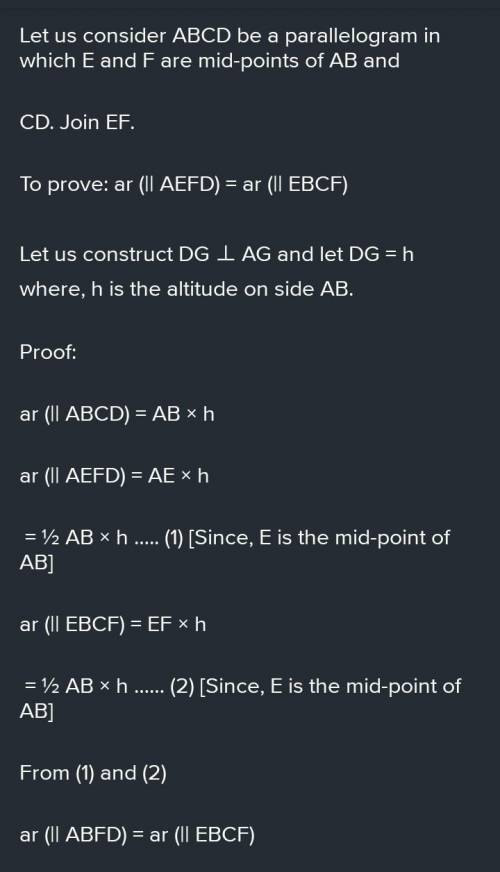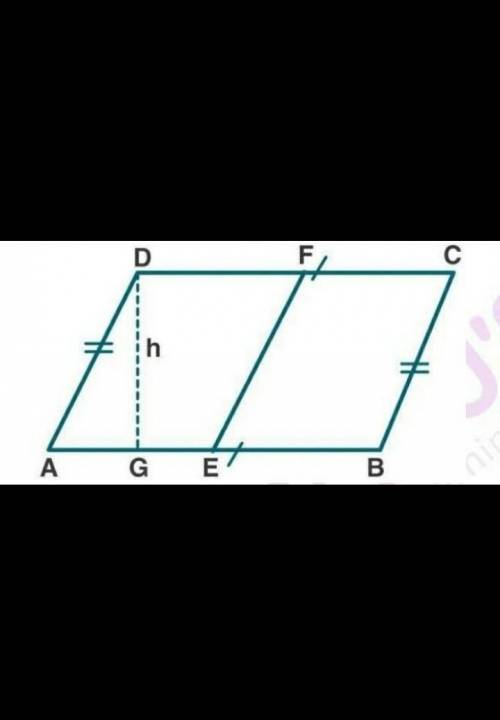
Mathematics, 07.07.2021 09:50 ella3714
ABCD is a square of side 12 cm. It is formed from two rectangles AEGD and
EBCG. H is a point on AD and F is a point on BC.
Find the area of EFGH.

Answers: 3


Another question on Mathematics

Mathematics, 21.06.2019 14:50
Eight people were asked what the balance of their savings account at the beginning of the month was and how much it increased or decreased by the end of the month. create a scatter plot that represents the data that is shown in the table. the x-axis represents the beginning balance in thousands of dollars and the y-axis represents the change in the savings account in hundreds of dollars. name beginning balance (in thousands of dollars) change in savings account (in hundreds of dollars) jimmy 5 3 kendra 4 7 carlos 5 4 yolanda 3 1 shawn 2 5 laura 3 2 andy 5 6 georgia 4 3
Answers: 1

Mathematics, 21.06.2019 15:00
Prove that 3: 8 is equivalent to 12: 32.a. use diagrams to support your answer.
Answers: 1

Mathematics, 21.06.2019 19:00
Which of the expressions (on the photo document i inserted) together represent all solutions to the following equation? 8cos(12x)+4=-4 *the answer should be in degrees.* > i would like for someone to explain the process to find the solutions for this.
Answers: 2

Mathematics, 21.06.2019 21:30
In a test for esp (extrasensory perception), the experimenter looks at cards that are hidden from the subject. each card contains either a star, a circle, a wave, a cross or a square.(five shapes) as the experimenter looks at each of 20 cards in turn, the subject names the shape on the card. when the esp study described above discovers a subject whose performance appears to be better than guessing, the study continues at greater length. the experimenter looks at many cards bearing one of five shapes (star, square, circle, wave, and cross) in an order determined by random numbers. the subject cannot see the experimenter as he looks at each card in turn, in order to avoid any possible nonverbal clues. the answers of a subject who does not have esp should be independent observations, each with probability 1/5 of success. we record 1000 attempts. which of the following assumptions must be met in order to solve this problem? it's reasonable to assume normality 0.8(1000), 0.2(1000)%30 approximately normal 0.8(1000), 0.2(1000)% 10 approximately normal srs it is reasonable to assume the total number of cards is over 10,000 it is reasonable to assume the total number of cards is over 1000
Answers: 1
You know the right answer?
ABCD is a square of side 12 cm. It is formed from two rectangles AEGD and
EBCG. H is a point on AD...
Questions


Physics, 21.10.2020 20:01

Mathematics, 21.10.2020 20:01


Biology, 21.10.2020 20:01





Mathematics, 21.10.2020 20:01

Mathematics, 21.10.2020 20:01


Chemistry, 21.10.2020 20:01


Mathematics, 21.10.2020 20:01

Social Studies, 21.10.2020 20:01

Mathematics, 21.10.2020 20:01

Mathematics, 21.10.2020 20:01

Spanish, 21.10.2020 20:01

Chemistry, 21.10.2020 20:01





